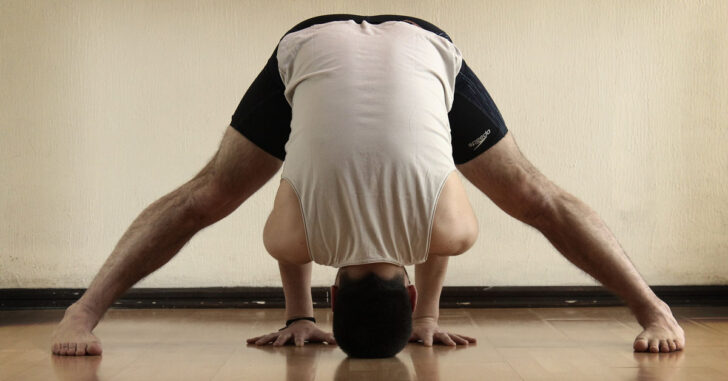Beauty & Health
Prasarita Padottanasana – Learn To Practice It Keeping Precautions, Tips & Variations In Mind
Prasarita Padottanasana is one of the most effective types of Yoga poses you can practice to maintain body posture.
In the modern world, certain Yoga postures are getting another thrill that no one can neglect (after the pandemic, of course).
FYI: It is 5000 years old yet traditional form of meditative exercise that helps relax the mind and body muscles (Yoga statistics).
- Prasarita Padottanasana is a pose that you should start practicing today to relieve stress and help against worldly problems.
- Problems and convincing yourself that I am enough.
- Therefore, in this article you will learn:
- 🧘 What is Prasarita Padottanasana Iyengar?
- 🧘 How can you enter this posture?
- And more.
- Be it yoga for beginners or athletes; You will have something for everyone.
- So, let’s get into this “healthy knowledge” thing.
Table of Contents
Prasarita Padottanasana Meaning in General
Pronunciation: (Prah-sah-REET-ah- Pah-doh-tahn-AA-SUN-aa)
In English translation, it stands for Wide-Legged Standing Forward Bend.
Additionally, you can call it a beginner to intermediate standing hip opener.
All of this requires you to stretch different body parts as you relax. Also, this yoga pose is specially designed to treat back, hip and thigh muscles.
As Richard Rosen says:
“Prasarita Padottanasana is not only the perfect prep for standing poses but for your cool-down, too.”
What Does Prasarita Padottanasana Mean In Sanskrit?
Prasarita is derived from the Sanskrit language meaning “extended” or “Extended”. However, the general outline of Padottanasana is as follows:
Pada – Foot
Grass – Intense
Asana – Pose
Therefore, Prasarita Padottanasana means “intense stretching of the feet” in Sanskrit.
Do you know? One can execute this yoga asana as a warm-up posture before getting indulged in Virabhadrasana or Parsvakonasana poses.
Scroll down to learn the most flexible ways to perform this pose.
How Do You Perform A Prasarita Padottanasana?
Below are the steps you need to follow in order to practice this yoga form comfortably.
What To Wear?
This exercise won’t stop you from wearing pajamas, t-shirts or shorts. Make sure to wear suitable yet stretchy clothing for a viable yoga move.
Bring yoga pads home to make any yoga workout painless.
If you also want to shed some belly fat, use slimming patches.
Standing Position:
Stand still on the mat as you do in the Tadasana position.
Then,
- Stretch or stretch until you feel uncomfortable stretching your feet further.
- Keep your thighs and knee straight and do not bend. It is better to use knee stabilizer pads to facilitate stretching.
- Put your hands on your hips, keeping your back super straight and your inner feet parallel to each other. Use the bunion toe trimmer to avoid the risk of splintering your toes.
- Inhale and lift your chest. As you do this, make your front torso slightly longer than your back and gently pull your shoulder blades together. If you’re a beginner, tighten your shoulders by wearing a splint.
- Exhale slowly while maintaining torso length.
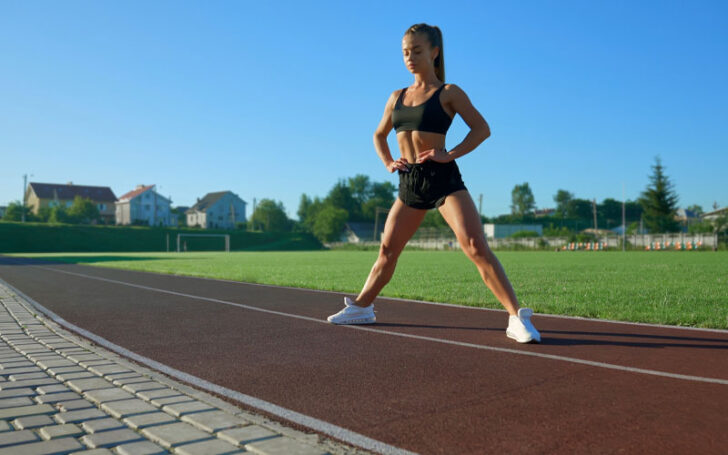
Bending Position
- Then, now it’s time to bend down to the ground.
- As your torso approaches the ground (folds forward), touch your fingers and extend your elbows.
- While doing this, be sure to keep your legs and arms parallel to each other and perpendicular to the ground.
- Then, with a slight movement, lower your head and drop it to the ground. Also, spread your hands by pressing them to the ground.
- Stay in position with pressure on your head.
- Hold your breath for 30 seconds to 1 minute and then exhale.
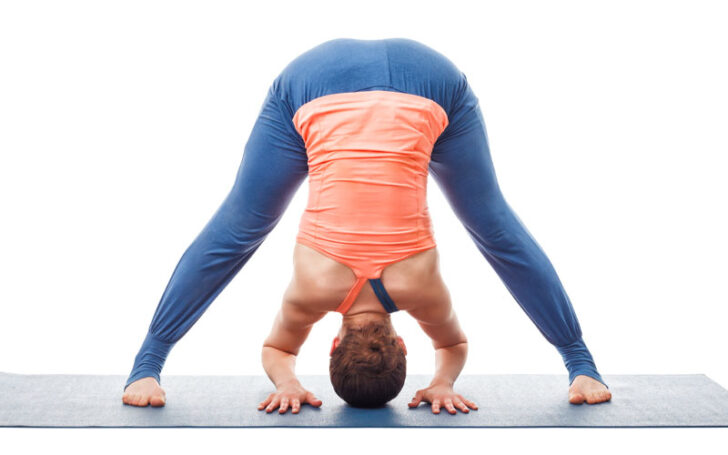
To come out of the Prasarita Padottanasana,
- Take your hands back and place them on your hips, breathing in. Now get up slowly (but be careful not to bend your back or even your legs).
- Returning to the standing position with legs stretched and chest lifted, you can now return to the Tadasana stance.
- Finally, you can breathe a sigh of relief as the pose is successfully practiced. 😉
Tip For The Pros: Want to add more fun to the Prasarita Padottanasana yoga posture? Get amazing balance benches and perform the steps by placing your feet (or hands) on them.
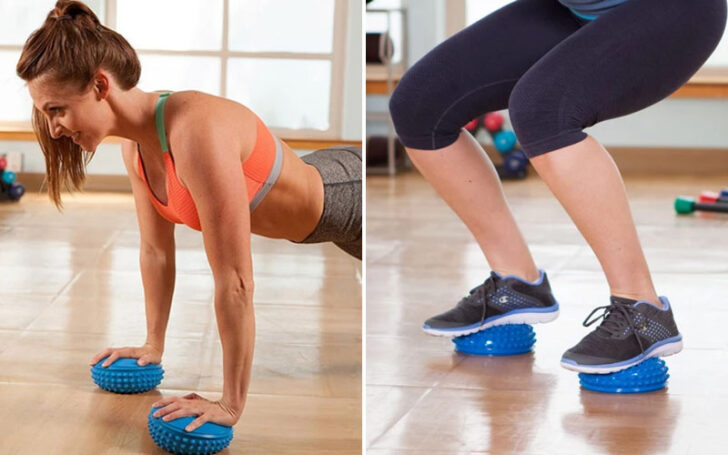
Don’t Forget To Check Prasarita Padottanasana Precautions
Remember, everything takes time, so you have to be patient.
For example, when you call to exercise every day, you won’t get past 15 minutes of continuous exercise with a happy smile on your face on the first day. TRUE?
The same goes for a wide-legged forward bend.
Therefore, it is important to pay attention to the following points to be followed:
🧘 Bring your body to the most comfortable state to perform this posture. Do not apply force to your body to fully bend.
🧘 This asana is not good for people who have recently had abdominal or hernia surgery.
🧘 Keep in mind your limits, range and abilities.
🧘 As this pose puts pressure on your head, it is better not to practice it if migraine is your chronic “pain partner”.
🧘 People with a hunchback should consider their body strength while performing this asana.
What Are The Benefits Of Prasarita Padottanasana
Prasarita Padottanasana’s pose has many benefits. First of all, it increases one’s self-confidence and reduces depression as it is a great asana for stress relief.
Other Prasarita Padottanasana Benefits include:
🧘 Strengthens your hamstrings, feet, spine and encourages introspection.
🧘 Relieves headache.
🧘 The pose calms the brain nerves.
🧘 Tones the abdominal organs.
🧘 Posture stretches the inner thighs and relieves pain from that area.
🧘 You will be excited to know that this yoga position helps with digestion.
🧘 Supports heart health.
🧘 The inward pose lengthens the spinal bones.
🧘 When the pose is practiced, it increases the flexibility of your different body parts such as shoulders, chest, abdomen, hips, back, thighs.
🧘 Do you want to keep the balance? This will help you do this.
🧘 It makes your walking strong. How? Supports calf muscles and ankle muscles.
🧘 Prasarita Padottanasana relieves stiffness of the back muscles.
Interesting Fact: It is deliberately practiced by fitness enthusiasts after prolonged standing, for example walking or running.
Additionally, you can get some useful gifts to surprise your walker friend.
Prasarita Padottanasana (a,b,c,d) Variations
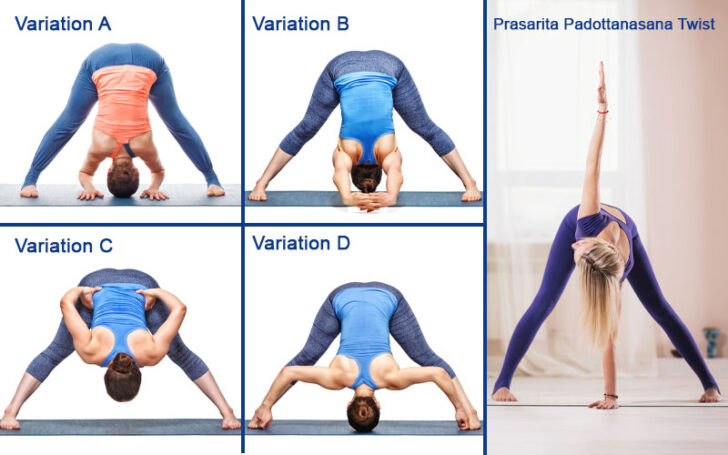
Apart from pressing your hands to the floor (as we discussed earlier – think variation A or Intense Leg Stretch), you can perform this pose in many ways, such as:
Variation B: Clasp your hands together by extending your arms while your head touches the floor. One of the best benefits of Prasarita Padottanasana b is that it treats hand fatigue.
Prasarita Padottanasana C: Keep your hands on your hips until you come back straight as you lean forward.
Prasarita Padottanasana D: Grasp your toes and two toes by grasping the outer edge of your feet. Remember to bend your elbows over the wrists
Prasarita Padottanasana Twist: This wide-legged forward bend is another variation we can do to stretch the body parts. Allows a person to touch the ground with one hand suspended in the air (upward). Asana improves whole body coordination
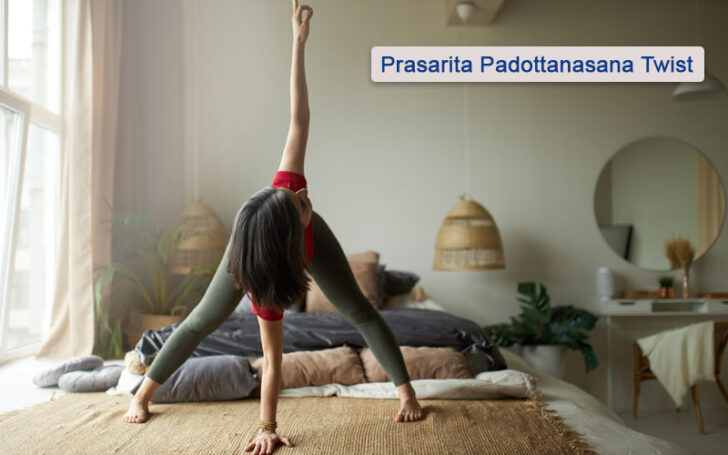
Other good variations are:
🧘 Sitting Wide Legged Leaning Forward Pose Hands Chair
🧘 Pendulum Stance
🧘 Pentacle Pose Arms Up
Therefore, whatever variation you try, all these asanas mainly treat and work the lower back and its posture.
Health Tip: Use diamond pattern massage balls to relieve foot pain while practicing Prasarita Padottanasana.
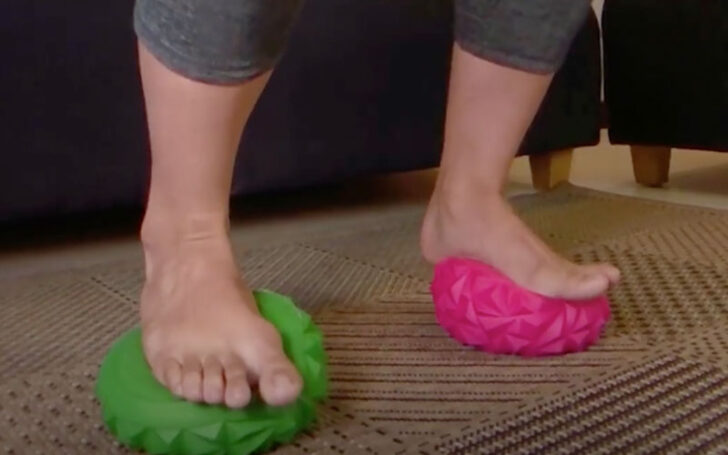
Prasarita Padottanasana – Tips For Ease
It’s not just a posture, it’s an activity you can do to prepare your body for meditation and inversions.
🧘 Put some effort on your legs and thighs.
🧘 Let calmness rule you and never show sadness on your face. It means keeping your gaze and face soft.
🧘 For comfort in the first days of practice, place a block under your head to feel the ground. Try the Wide Legged Forward Bend Pose while laying your head on such blocks.
🧘 If you fail to keep your back straight (i.e. turning), return to your true position and accept your body’s limitations.
🧘 Make sure your hamstrings are tense so that leaning forward does not affect the posture of your body parts.
FAQs
Who Should Not Do Prasarita Padottanasana?
Some of the contraindications are: People with high blood pressure, severe knee pain or back problems should avoid practicing this yoga step. Those with hamstring tears are also included in the list.
Also, students (regardless of age) and those with fibromyalgia or arthritis should consult their physician before attempting to pose.
What Is Urdhva Prasarita Padottanasana?
It’s known as the “Up extended foot pose,” which targets the hip flexor muscles and deep abdominal muscles.
Prasarita is quite different from Padottanasana. As in this pose, your hips touch the floor.
Does Yoga Help With Hunchback?
Yes like that. Develops and regains spinal strength by providing flexibility and maintaining good body posture.
Bottom Line
As Shilpa Shetty Kundra (Indian Actress & Yoga Enthusiast) shares her perspective on Yoga in the caption of her Instagram post:
“It is very important to start something with a clear mind and a positive attitude. It could be a new venture, a new task, or a new day. The best way to start the day and week is with Yoga.”
So, if you really want to have a NEW start to the day, do different yoga exercises every day.
stay fit! Stay healthy!
Also, don’t forget to pin/bookmark and visit our blog for more interesting but original information. (Vodka And Grape Juice)

